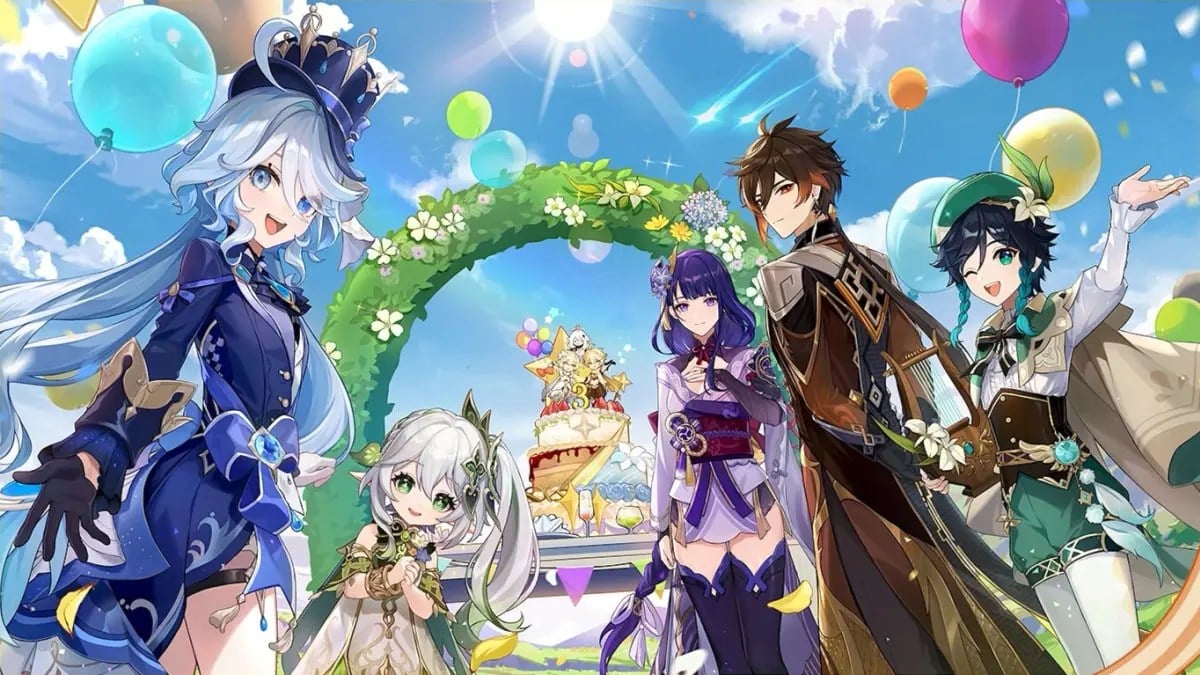Most trading card games (TCGs) struggle with defining the identities of their colors or card types within their early years. Disney Lorcana is still a toddler compared to the rest of the TCG genre, yet it has done a fantastic job at giving each of its ink types a distinct identity. Each of the six ink types have keyword abilities, themes and strategies that make them worthy of seeing play in both casual and competitive environments.

Inks in Lorcana can be compared to mana colors from Magic: The Gathering or the various elements from Pokémon. The six different types of inks are:
- Amber
- Amethyst
- Emerald
- Ruby
- Sapphire
- Steel
Why are ink types important in Disney Lorcana?
The Illumineers (players) use ink to play cards such as locations, items, or glimmers (characters). The type of ink that a card belongs to roughly determines what abilities or overall strategy it relates to. One of the best examples of this is the Ruby ink and how its cards, such as Maui—Hero to All, have keyword abilities such as Reckless or Rush, which enable the aggressive nature of the ink.
Lorcana decks can consist of up to two different ink types. This means if a deck is built with Ruby and Amethyst cards, it cannot contain cards from Emerald or the other ink types. Ideally, decks are built with ink pairs that complement each other which the official Disney Lorcana Starter Decks do wonderfully.
Here are every Disney Lorcana ink type, along with explanations of their characteristics, strengths, and most compatible ink pairings.
Every ink type in Disney Lorcana
Amber
The Amber ink type is considered the most supportive ink in Lorcana. Players can find Bodyguards, healing abilities, and many synergies that aren’t found in other ink types. Amber glimmers sport high willpower but has rather insignificant strength stats.
This ink makes great use of the Bounce effects produced from the Amethyst ink or utilizes the high-cost Steel characters to sing some of the most impactful Songs in the game.



Amethyst
Characters from the Amethyst ink type have some of the most powerful abilities in the TCG. The strength of this ink type is heavily attributed to the abilities that each card has and thus, doesn’t have the best stats. Despite this, Amethyst has one of the most competitive mechanics in the game, known as the “Bounce” effect. This effect allows cards to be returned from play to the owner’s hand, which synergizes well with abilities that trigger after entering or exiting play.
Amethyst is found in many top-placing decks in Lorcana tournaments and is often paired with Amber or Ruby ink to create a Bounce Control deck archetype.



Emerald
Players seeking interaction cards (ways to affect the opponent’s board or hand) can find what they need in the Emerald ink type. This ink is perfect for those looking to have a reactionary playstyle. Emerald contains many clever forms of card removal and discard effects which can stop your opponents in their tracks.
Emerald is a somewhat underutilized ink in competitive play, but that’s not to say that it is underpowered. In tournament play, Emerald is found paired with Steel; Slowing down the opponent with pesky discard effects so that they aren’t prepared to answer the might of Steel’s toughest characters.



Ruby
Lorcana honors the tabletop/TCG tradition of making red a representative of all things aggro. The Ruby ink type is the most aggressive of them all. Characters of the Ruby ink have abilities that enable them to take action immediately after entering play and have many ways to create a board advantage over the opponent. Ruby’s strategy is simple which makes it an excellent ink for beginner players to learn the game with.
Ruby isn’t only for newer players, though. This ink is frequently found in the top 4 of tournaments and is one-half of the most popular deck archetype: Bounce Control. This archetype utilizes the bounce mechanic of Amethyst to trigger the aggressive abilities of Ruby cards over and over again. Ruby is also paired with Sapphire to create the fun Pawpsicles archetype.



Sapphire
If Sapphire ink were a class, it would be the wizard. Sapphire contains a wide variety of spells and abilities that enable many strategies found in Lorcana. Some cards grant Ward, which protects allies from the opponent’s abilities, along with the greatest sources of card drawing abilities of all of the ink types. Players familiar with other TCGs would be pleased to know that Sapphire is considered the best Ramp ink. In Lorcana, ramping means filling your inkwell quickly so that you have the resources to play higher-cost cards before you normally would.
Sapphire’s card drawing and ramping characteristics make it the perfect supporting ink for the powerful characters found in the Ruby and Steel ink types.



Steel
The Steel ink type is by far the most defensive ink in Lorcana. This ink opts for raw stats over fancy abilities and effects. Steel characters boast the highest strength and willpower stats of Lorcana, and they don’t stop there. Many of these characters have the Challenger keyword ability which further boosts their stats whenever they are challenging another character.
The Steel ink’s simplistic, brute-force nature requires sufficient support to get the ball rolling. This is why Steel’s favorite pairings are Emerald and Sapphire since they can either stall the opponent or generate enough resources to play the expensive Steel characters.











Published: Jun 9, 2024 10:03 am